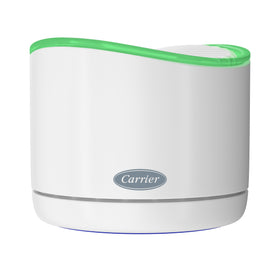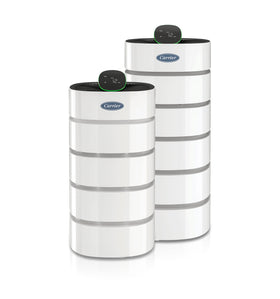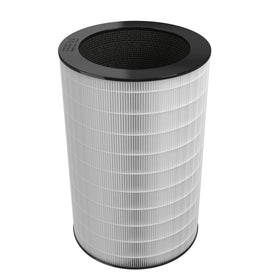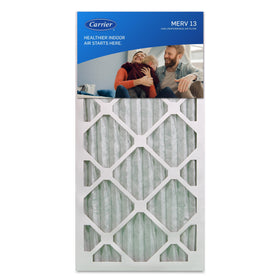Do I need an air purifier in my home?
An air purifier can be a helpful addition to most homes. According to the EPA, "indoor levels of pollutants may be two to five times — and occasionally more than 100 times — higher than outdoor levels."* And, from the EPA, "When used properly, air cleaners and HVAC filters can help reduce airborne contaminants including viruses in a building or small space."**
*https://www.epa.gov/iaq-schools/why-indoor-air-quality-important-schools#:~:text=EPA%20studies%20of%20human%20exposure,percent%20of%20their%20time%20indoors.
**https://www.epa.gov/coronavirus/air-cleaners-hvac-filters-and-coronavirus-covid-19
I already have a whole-home air purifier or filter system. Will I benefit from purchasing a air purifier?
When used in conjunction with your whole-home air purifier or filter, an air purifier provides additional air filtration benefits for a specific space.
How does the air purifier remove odors?
As a part of it's three-level filtration, the air purifier uses a carbon filter to help remove some odors from your room's air.
What size particles can be filtered with the air purifier?
With it's high-efficiency filter, the air purifier is over 99% effective in capturing airborne particles as small as 0.3 microns.
Does the air purifier eliminate secondhand smoke?
While the air purifier does not eliminate secondhand smoke, it can filter portions of the particulate matter in second hand smoke that is 0.3 microns or larger. However, some secondhand smoke particulate could be smaller, and any amount of secondhand smoke remaining will continue to pose a health risk to those exposed.
Does the air purifier eliminate the coronavirus?
The air purifier has not been specifically tested for its ability to eliminate coronavirus. However, according to the EPA, "By themselves, portable air cleaners and HVAC filters are not enough to protect people from the virus that causes COVID-19. When used along with other best practices recommended by CDC and others, filtration can be part of a plan to protect people indoors."*
* https://www.epa.gov/coronavirus/air-cleaners-hvac-filters-and-coronavirus-covid-19
What pollutants can be filtered with the air purifier?
The air purifier, with three-stage filtration can remove dust, pollen, and any airborne particles with a size of 0.3 microns from air that enters the filter.
What is PM 2.5? What level is acceptable?
PM is an abbreviation for particulate matter. The number next to PM generally refers to the diameter of the particle pollutant measured in micrometers. According to the EPA, "PM 2.5 pollutants consist of fine inhalable particles that are generally 2.5 micrometers and smaller". It is ideal to have the lowest level of particulate matter in the air around you as they can pose the greatest health risks.*
The monitor on the air purifier will illuminate different light colors based on the PM 2.5 level detected in the room in accordance to the EPA standards for PM 2.5 exposure.
• Blue color: Good air quality
• Green color: Moderate air quality
• Yellow color: Bad air quality
• Red color: Very bad air quality
* https://www.epa.gov/pm-pollution/particulate-matter-pm-basics
What are air changes per hour?
Air Changes per Hour (ACH) refers to the number of times the air in a given space will be turned over or filtered within an hour. The number of air changes per hour depend upon several factors such as ceiling height, room width and length, as well as the amount of airflow within a space. Airflow in a space can be increased with a fan or other means of introducing or moving the air in the space.
What is a CADR rating?
To help understand the efficiency of your air purifier, Clean Air Delivery Rate (CADR) is a rating system designed by The Association of Home Appliance Manufacturers (AHAM) as a consistent measurement of performance across products in the market. CADR is a measure of the amount of filtered air delivered by the room air cleaner.
What is the CADR rating of the air purifier?
• Air Purifier and Smart Air Purifier: Tobacco Smoke CADR - 282, Dust CADR - 281, Pollen CADR - 315
• Air Purifier XL and Smart Air Purifier XL: Tobacco Smoke CADR - 365; Dust CADR - 385, Pollen CADR - 427
What is MERV?
The Minimum Efficiency Reporting Value (MERV) is the standard comparison of an air filter’s efficiency. The MERV scale ranges from 1 (least efficient) to 16 (most efficient) and measures a filter's ability to remove particles from 0.3 to 10 microns in size.
Higher MERV rated filters can cause a pressure drop and resulting drag on HVAC equipment, depending on the system. Please consult with your local Carrier expert for the recommended MERV size for your system.




